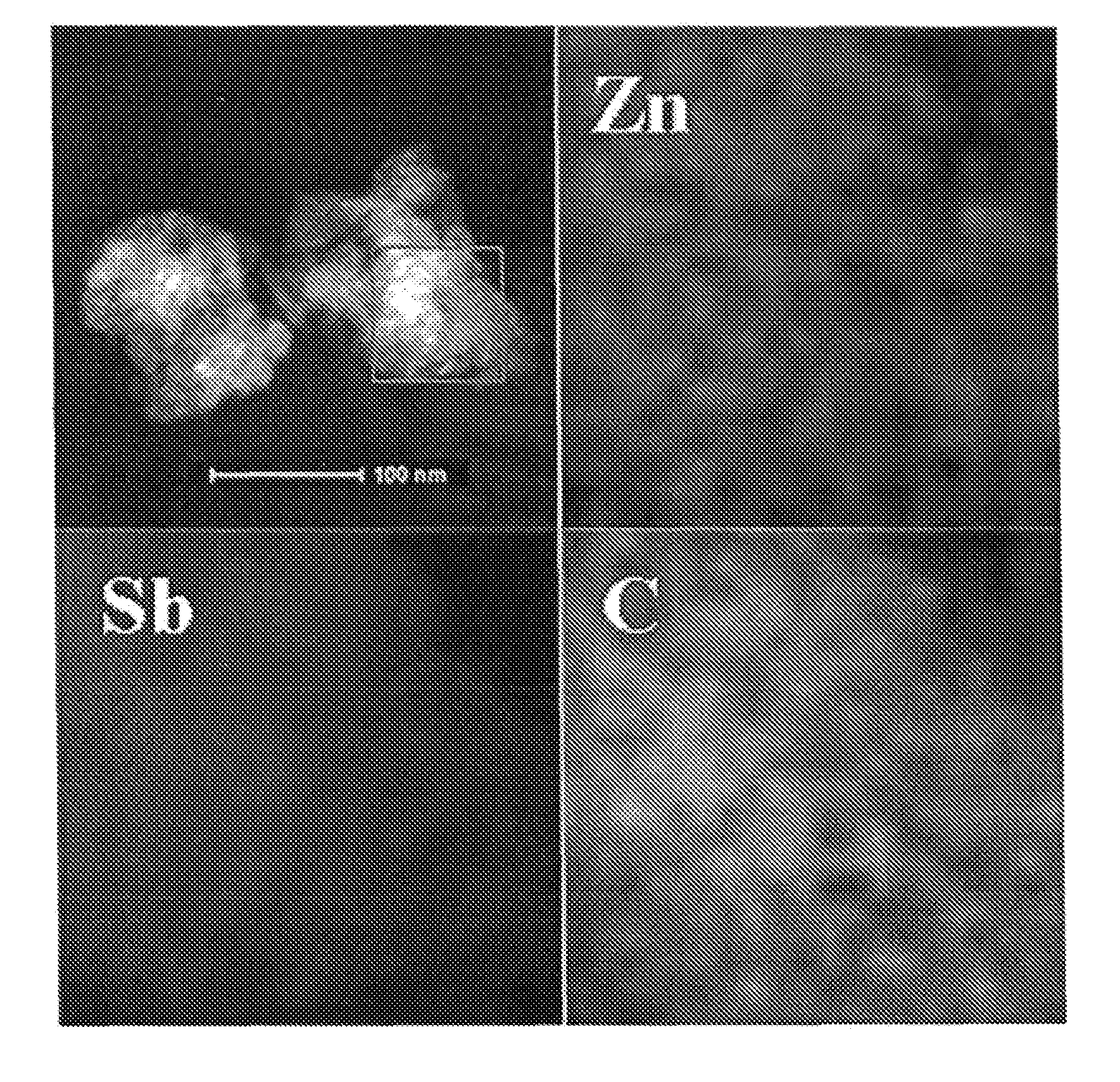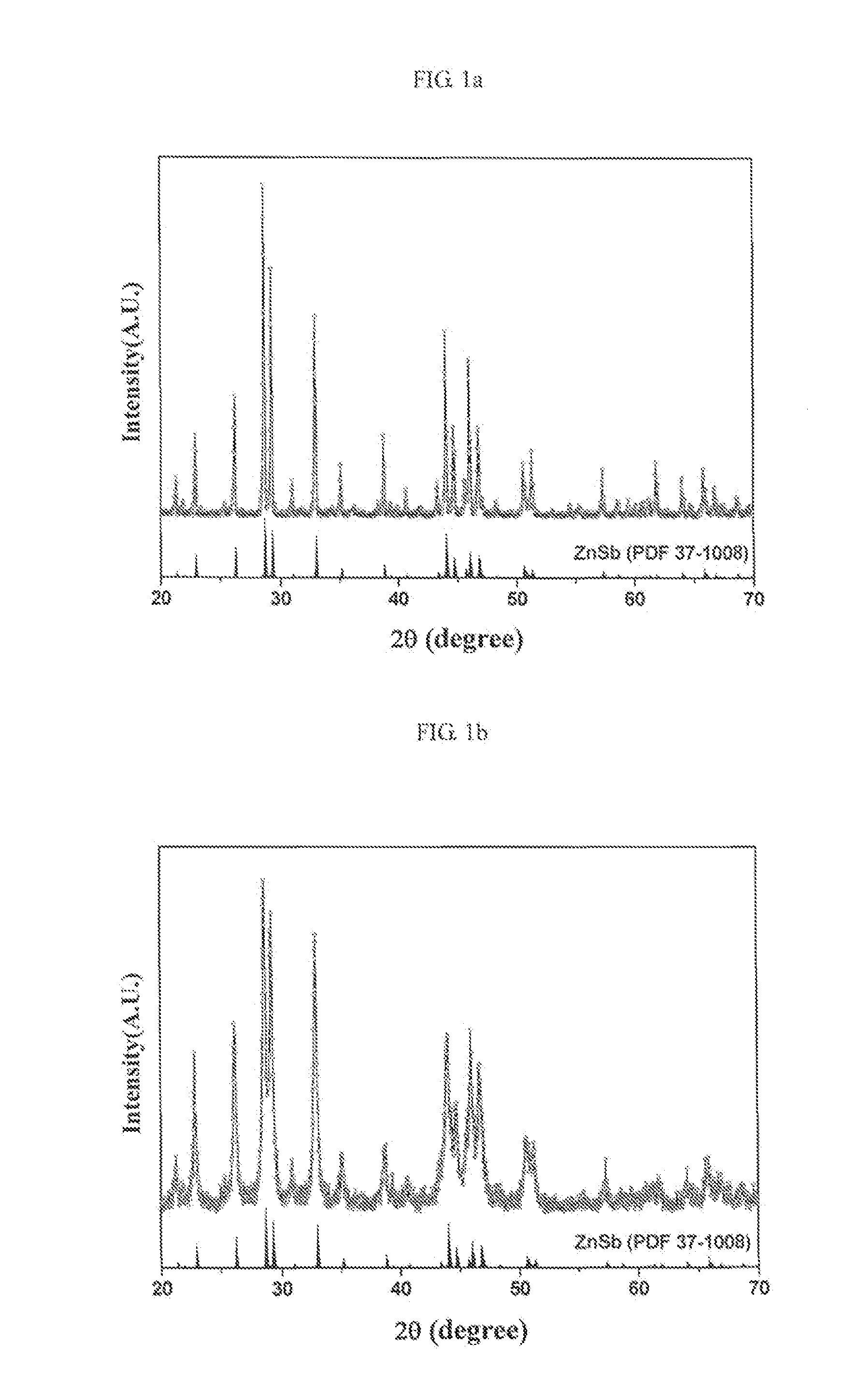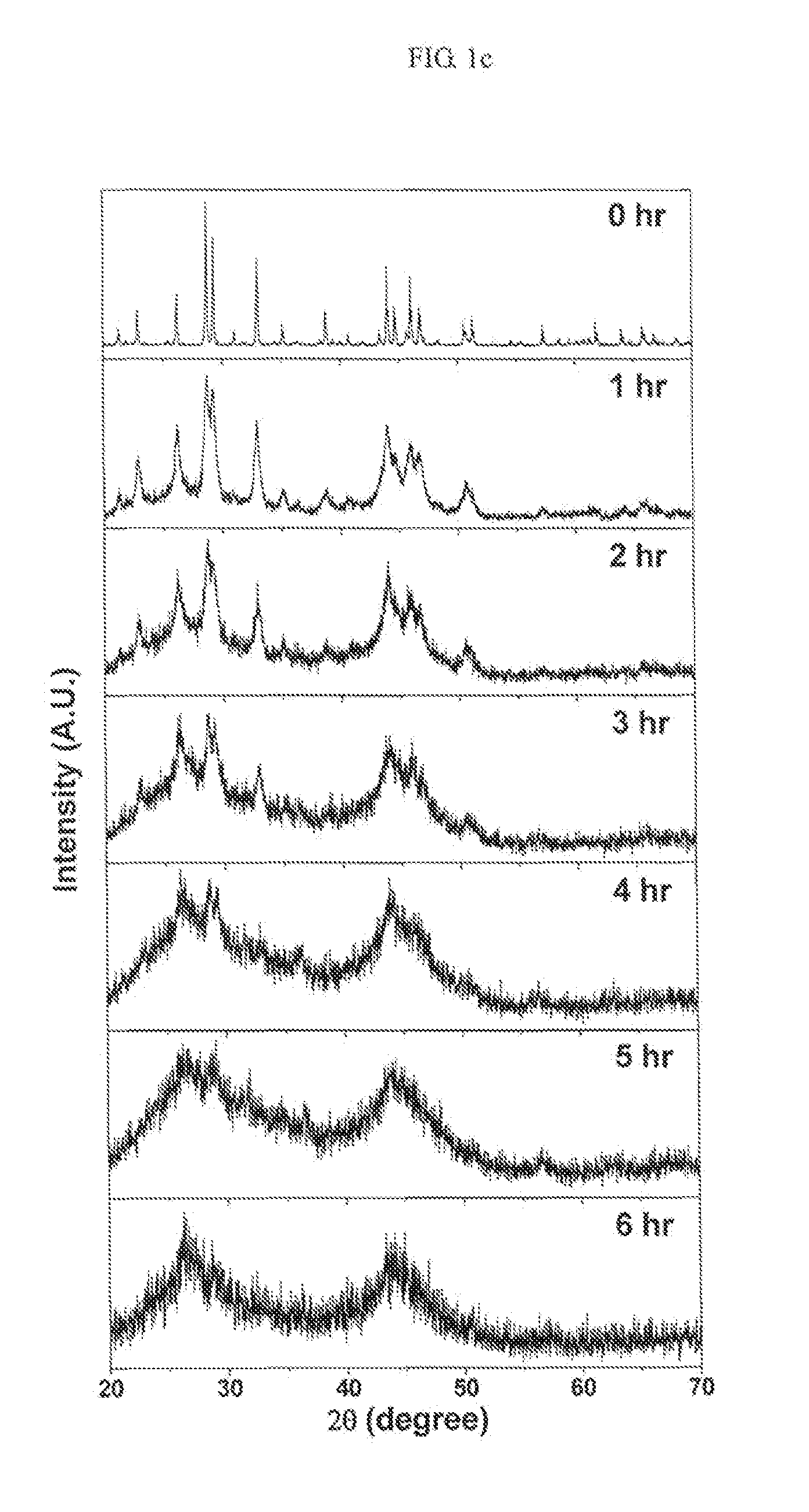Preparation method of znsb-c composite and anode materials for secondary batteries containing the same composite
- Summary
- Abstract
- Description
- Claims
- Application Information
AI Technical Summary
Benefits of technology
Problems solved by technology
Method used
Image
Examples
example 1
Preparation of Zinc Antimonide (ZnSb)-Carbon Composite
[0051]1-1. Preparation of Binary Alloy Phase of Zinc Antimonide
[0052]First, commercially available zinc powder having an average particle size of 20 μm was mixed with commercially available antimony powder having an average particle size of 100 μm at a molar ratio of 1:1, and then the mixture was heat treated at 500° C. for 3 hours under argon atmosphere to obtain powder of a binary alloy phase of zinc antimonide.
[0053]Otherwise, a mixture containing zinc and antimony powder at a molar ratio of 1:1 was introduced into a cylindrical vial made of SKD11 and having a diameter of 5.5 cm and a height of 9 cm together with balls with a size of ⅜ inches, and the vial was mounted to a ball milling system (Spex 8000-vibrating mill) to perform mechanical synthesis. At that time, the weight ratio of the balls to the mixed powder was maintained at 20:1, and the mechanical synthesis was carried out in a glove box under argon gas atmosphere in ...
example 2
Production of Secondary Battery Using Zinc Antimonide (ZnSb)-Carbon (C) Composite as Anode Active Material
[0058]First, an electrode sheet was provided by adding 70 wt % of the zinc antimonide-carbon composite obtained from Example 1 as an anode active material, 15 wt % of Super-P (conductive agent) and 15 wt % of PVdF (binder) to N-methyl pyrrolidone (NMP) to form anode mixture slurry. The slurry was coated on copper foil and dried in a vacuum oven at 120° C. for 3 hours. Also, lithium foil was used as a counter electrode or reference electrode.
[0059]As a separator, Cellguard™ (insulating thin film having high ion peimeability and mechanical strength) was used. As an electrolyte, ethylene carbonate (EC) / diethyl carbonate (DEC) (1:1 by volume) containing 1M LiPF6 salt was used.
[0060]A self-made coin cell type half cell was used to perform charge / discharge cycles while applying a constant current at a voltage range of 0-2 V. This was made in a glove box to avoid the cell from being i...
PUM
| Property | Measurement | Unit |
|---|---|---|
| Particle size | aaaaa | aaaaa |
| Particle size | aaaaa | aaaaa |
| Fraction | aaaaa | aaaaa |
Abstract
Description
Claims
Application Information
 Login to View More
Login to View More - R&D
- Intellectual Property
- Life Sciences
- Materials
- Tech Scout
- Unparalleled Data Quality
- Higher Quality Content
- 60% Fewer Hallucinations
Browse by: Latest US Patents, China's latest patents, Technical Efficacy Thesaurus, Application Domain, Technology Topic, Popular Technical Reports.
© 2025 PatSnap. All rights reserved.Legal|Privacy policy|Modern Slavery Act Transparency Statement|Sitemap|About US| Contact US: help@patsnap.com



